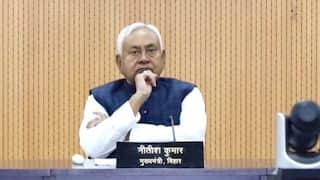Linear to Circular: The Road to Sustainable Prosperity
Circular economy model emphasizes prolonged sharing, leasing, reusing, repairing, refurbishing, and recycling materials and products to extend the life cycle of products and minimize waste.

Circular economy as a concept has gained widespread prominence with an increase in environmental challenges posed by linear consumption patterns. The creation of a circular economy, while an environmental necessity today, could offer significant economic opportunities. The transition towards a circular economy would warrant innovation, collaboration, alignment of policy, and an understanding of the dimensions of such an economy along with the necessary steps needed to encourage its adoption in the country.
The Need and Benefits of a Circular Economy
The circular economy is a model pertaining to production and consumption. It emphasizes prolonged sharing, leasing, reusing, repairing, refurbishing, and recycling materials and products in order to extend the life cycle of products and minimize waste. Under this model, continuous value is created by using materials recurrently and retaining them within the economy through recycling. Increased recycling of raw materials offers additional advantages such as mitigation of risks linked with supply, including price instability, availability and import dependency.
Moving towards a circular economy has numerous benefits, including environmental protection and preservation; slowed depletion of natural resources; reduced biodiversity damage; decreased disruption of habitation and landscape; cutback in total annual greenhouse gas emissions; less resource and energy consumption; creation of more efficient, reliable and sustainable products capable of being reused, upgraded and repaired; reduced packaging burden; and decreased dependence on raw material. Further, the shift to a circular economy would result in the creation of more jobs, enhanced competitiveness and innovation, and increased economic growth.
Key Dimensions and Factors for Creating a Circular Economy
Key dimensions of the circular economy include designing products for durability and repairability; emphasis on recycling, refurbishing, and using renewable materials; ensuring circulation of materials within the economy; collaborative consumption models; waste minimization; innovation, digitalization and efficient tracking of resources, supply chains and product lifecycles; and creation of circular business models. At the same time, factors crucial to the creation of a circular economy include policies and regulations incentivizing circular practices; awareness campaigns aimed at educating people and enhancing public awareness to promote circular thinking, collaboration and stakeholder engagement; investment in research, innovation, and infrastructure; and changing consumer behaviour.
Global Efforts Towards Circular Economy Adoption
Governments across the world are making serious efforts to adopt the circular economy model. With the European Union generating over 2.2 billion tonnes of waste annually, the EU is revising its waste management legislation to promote the shift to a more sustainable circular economy. Parliament is encouraging Europeans to move towards a circular economy by emphasizing more efficient utilization of raw materials and minimization of waste. The European Parliament has also sought measures to address the practice of “planned obsolescence” (a strategy under which products are designed to have a limited lifespan so that consumers have to buy the products again), stressing the need for more sustainable and responsible consumption and production patterns.
India's Vision for a Circular Economy
The Indian government has laid down several rules and policies, such as the Plastic Waste Management Rules and E-waste Management Rules, to drive the country towards a circular economy and reduce plastic waste. NITI Aayog has made several significant recommendations and efforts to promote a circular economy in the country. In September 2022, the Circular Economy Cell (CE Cell) was established to work together with ministries and departments towards enforcing circular economy action plans across sectors. Ten sectoral action plans were also finalized for implementation by stakeholder ministries and departments. Further, NITI Aayog, through a published status paper on Resource Efficiency & Circular Economy, outlined 30 recommendations with 14 as priority actions, covering waste reduction, resource optimization, and sustainable practices.
NITI Aayog is making efforts to shift India from a linear to a circular economy, with 11 areas identified in consultation with the Ministry of Environment and Forest and Climate Change; these efforts also align with India's Aatma Nirbhar Bharat Abhiyaan for self-reliance and sustainable development. There are plans to engage further with states to promote circular economy practices at the regional level.
In December 2023, the 'National Circular Economy Roadmap for reduction of Plastic waste in India' was released. It was a collaborative effort between research institutions from India and Australia. The roadmap aimed to foster research and industry partnerships to transition India's plastics sector to a circular economy. India's commitment to achieving a Net Zero target by 2070 were highlighted along with efforts in developing technologies for reducing India's carbon footprint and promoting recycling.
These initiatives reflect India's commitment to forging a sustainable and circular economy, promoting resource efficiency, and minimizing environmental impact.
Corporate Efforts to Circular Economy Practices
Entrepreneurs the world over are increasingly acknowledging the importance of adopting a circular economy, and are becoming actively engaged in addressing the waste crisis and redefining economies. In fact, businesses across the globe are striving at the forefront to achieve a more circular economy, emphasizing reuse and recycling. Unilever’s circular economy strategy includes designing for circularity, reducing waste, and increasing recycling and reuse. DyeCoo reduces water usage, cost and energy consumption by employing highly pressurized “supercritical” carbon dioxide, a large portion of which is recycled. Close the Loop seeks to recover value from old printer cartridges and soft plastics. The company has innovated to turn these materials into roads.
RLG Systems India is actively contributing towards a circular economy by focusing on sustainable practices and responsible e-waste management. Recognizing the importance of minimizing environmental impact and resource wastage, RLG Systems India supports manufacturers and importers & brand owners in meeting their Extended Producer Responsibility (EPR) obligations, offering end-to-end solutions for e-waste management. The company has established a comprehensive network of collection points, material providers and recyclers to ensure efficient handling of e-waste. The company also collaborates with various stakeholders, including government bodies and NGOs, to drive innovation and promote sustainable practices. RLG Systems India's Clean to Green™ (C2G) campaign has been successful in spreading mass awareness about responsible e-waste disposal and increasing e-waste collection rates across the country. By promoting refurbishment, recycling, and recovery of valuable materials from electronic, battery, plastic, tyre and textile waste, RLG Systems India is reducing the need for virgin raw materials and conserving natural resources.
Conclusion: Shaping a Sustainable Future
In conclusion, the shift from a linear to a circular economy could indeed lead to sustainable prosperity. Adhering to the principles of recycling, reuse and responsible consumption could allow us to realize outcomes ranging from environmental protection to economic growth. Through joint efforts from governments, organizations and individuals, we could very well shape a more sustainable and resilient future.
Written by: Radhika Kalia, MD, RLG Systems India Pvt. Ltd.
Company Website- https://rev-log.com/in/
(Disclaimer: ABP Network Pvt. Ltd. and/or ABP Live does not in any manner whatsoever endorse/subscribe to the contents of this article and/or views expressed herein. Reader discretion is advised.)


















